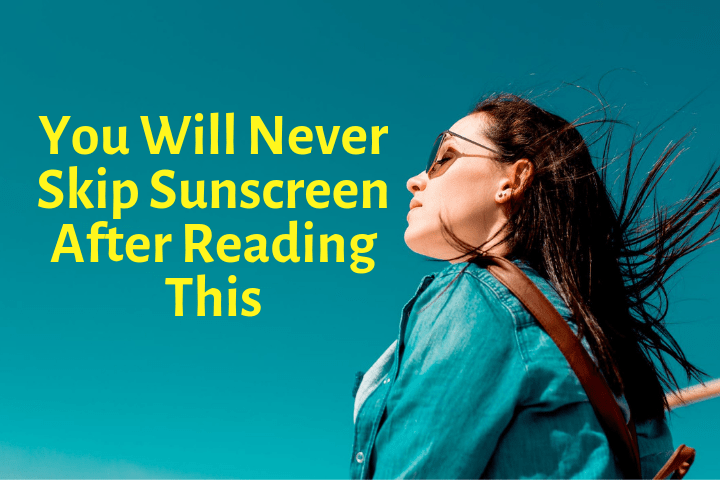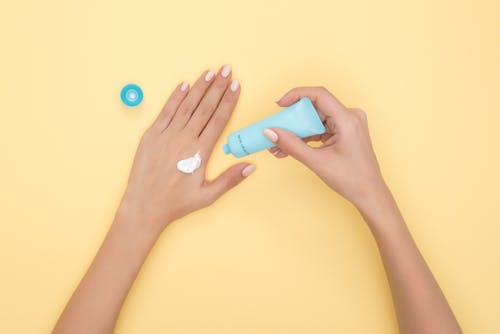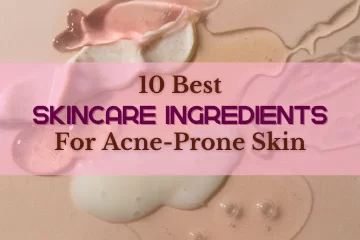You Will Never Skip Sunscreen After Reading This

Even though sunscreen is something we should all be wearing all year round, some of us don’t bother about sun protection until spring or summer comes around or while traveling to a hot and sunny place.
This is because many of us don’t know that sunscreen is that one product that helps us a lot in prevention from a ton of skin problems like wrinkles, skin aging, pigmentation, etc.
When I was facing sever skin problems (specifically hyper-pigmentation), no one was there to tell me how important sun protection was for my skin. Specifically, in cases of pigmentation, YOU HAVE TO WEAR SUNSCREEN DAILY!! It prevents your skin from further damage.
If you don’t wear sunscreen, then whatever you may be applying to your skin will lose its full effectiveness. In order to take full benefits of your skincare routine products and medications, you need to protect your skin from UV rays.
Sunscreens help in providing your skin with a barrier from UV rays that we face daily. These harmful UV rays are not just from the sun, but also from the electronic devices we use and keep close to us.
Regular use of sunscreen will keep the skin youthful and glowing for much longer term.

What Is UVA and UVB
There are two basic types of ultraviolet rays that reach us daily, UVA & UVB. And of course, too much exposure to these rays causes damage to our sensitive skins.
UVA
UVA rays penetrate more deeply into the skin. Too much exposure to UVA rays can also cause skin cancer. These rays play a greater role in premature aging of the skin like wrinkle formation or premature sagging of the skin.
UVB
UVB rays are the ones responsible for sunburns. In worst case scenarios UVB rays can cause dark brown or black moles on our skin that is a type of skin cancer known as Maligant Melanoma.
This is why most of the sunscreens/sunblocks in the market provide us with both UVA and UVB protection because both of these play an important role in ruining multiple layers of our skin.

Why Do We Need To Protect Our Skin?
Exposure to sun’s UV rays can cause freckles and brown spots on our skin. Over time this worsens the case of hyper-pigmentation. These rays not only kill the skin cells but also reduce elastin and collagen from the dermis layer of the skin.
Elastin and Collagen are what makes our skin bouncy and young. When these are reduced, our skin starts to age quickly. Fairer skin types are more prone to damage because they have less melanin. Melanin is used to protect our skin and give the skin its color.
UV radiations are also major creators of free radicals. Free radicals are toxic byproducts of oxygen metabolism that can cause significant damage to living cells and tissues. They can damage cells at the molecular level. They can actually change the cells in a way that can lead to cancer.
Antioxidants are used to counteract with free radicals. Vitamin C is an antioxidant and one of my favorite ingredients in skin care. Click here to learn more about Vitamin C in this previous post of mine.
More antioxidants like Vitamin A, E and green tea can be used to tackle free radicals.
The Two Main Types Of Sunscreen
There are two main types of sunscreen:
Mineral Sunscreens
There are only two most common mineral sunscreens. That are Titanium Dioxide and Zinc Oxide. They both work in the same way. They form a layer on top of our skin and prevent any UV rays from penetrating into the skin.
These sunscreens can leave a white cast on your skin if you are more on the tanner skin side. But if you take some time to work it in, it will be fine.
Chemical Sunscreens
These types of sunscreens absorb into the skin and convert the UV rays into heat which deactivates them and prevents them from harming the skin. The heat does not burn your skin at all it just feels a bit warm. The common ingredients in chemical sunscreens are Homosalate, Octocrylene, and Avobenzone.
The main purpose of telling you these difficult names is so you can know more about what is in your skincare product and not panic when reading these harsh names. 😅
Chemical sunscreens come in more thinner consistencies. They are also water resistant, so if you sweat or get wet it won’t cause white patches.
Forms Of Sunscreen
Most of us don’t like to apply sunscreen because it is thick, it leaves a white cast, it is greasy and can sometimes break us out. But that’s not the case now. Yes, there was a time when sunscreens were like this, but now we have realized its importance, we have so many forms of sunscreens to choose from.
- Gel Sunscreen
- Cream Sunscreen
- Sunscreen Lotions
- Sunscreen Wipe
- Spray Sunscreen
- Colored Sunscreen (Tinted Sunscreen)
- Powder Sunscreen
I will soon post a detailed version on sunscreen forms and which products to use. Make sure you’ve signed up 😉
To Conclude:
- We must protect our skin and wear sunscreen almost all day, making sure to reapply after 4 to 5 hours at most.
- The peak time for protection is from 10 am to 2 pm because at this time UV levels are at its highest.
- You can maximize sunscreen benefits by using antioxidants like vitamin A, E or C. They protect your skin from free radicals.
- Some people complain that certain forms of sunscreens make them break-out, are too oily, cause allergic reactions, dry their skin out or are full of harmful chemicals.
- I will make sure to write a post on sunscreen recommendations and what works best for which skin type and what ingredients should you look for. Make sure to Sign UP for Blog Updates 😊
- Don’t forget to add sunscreens in your derm rituals, starting today
😉


